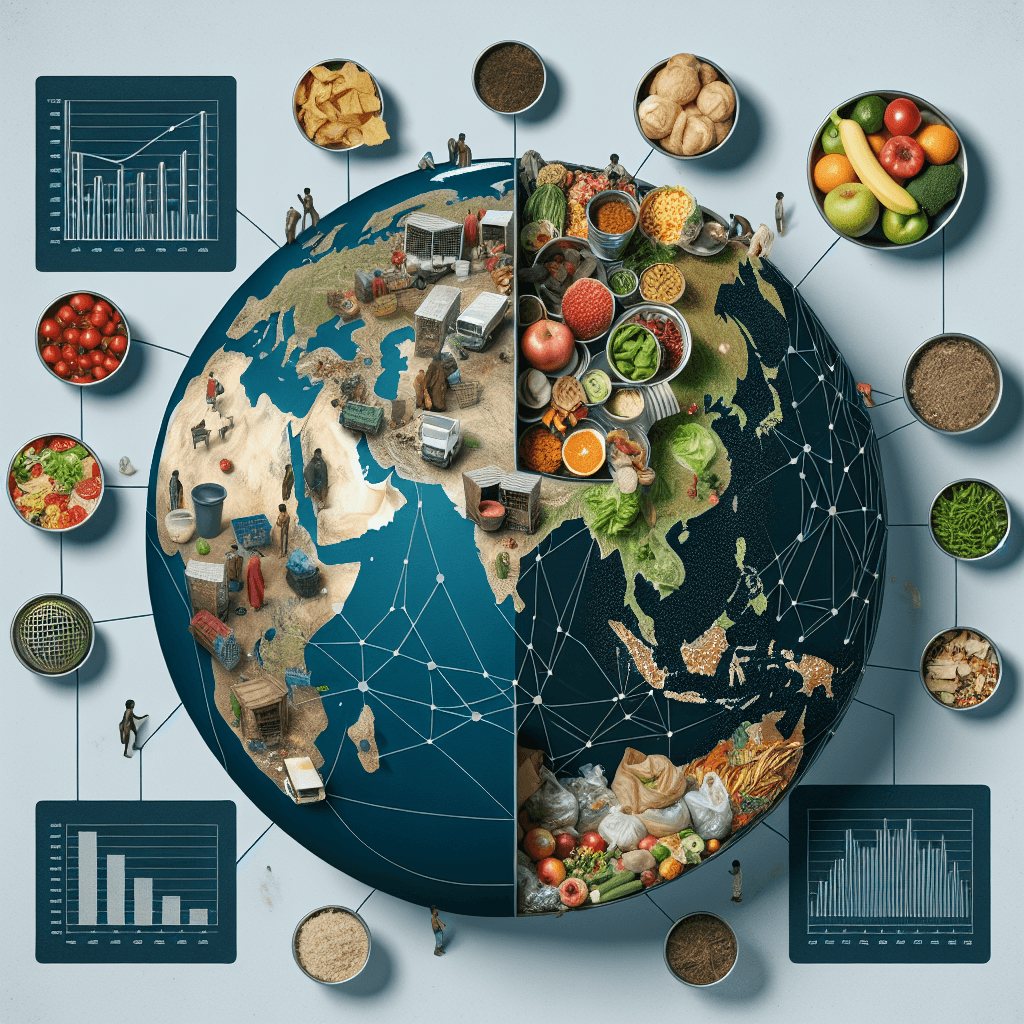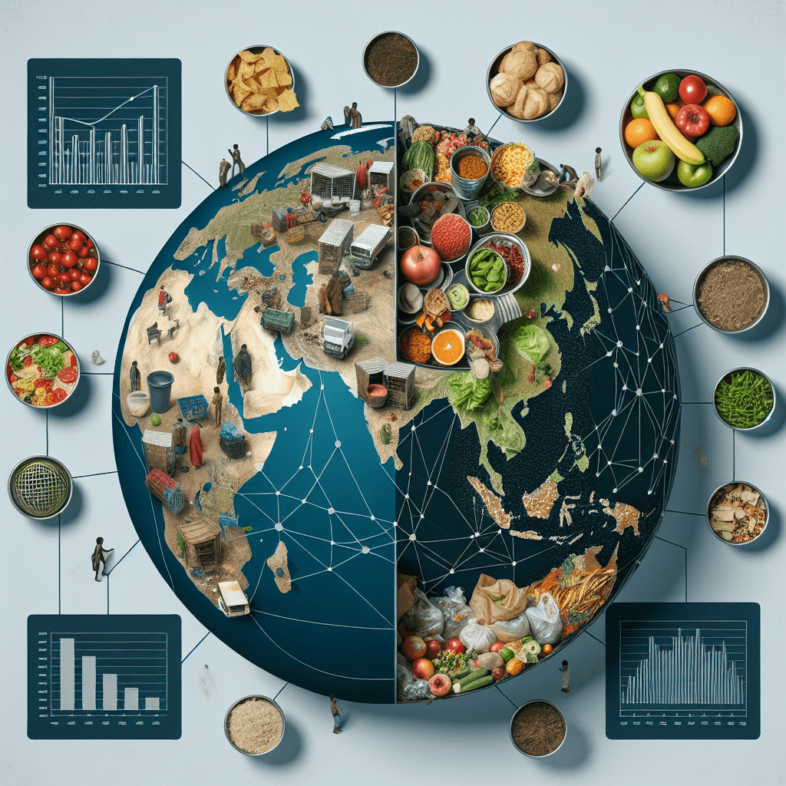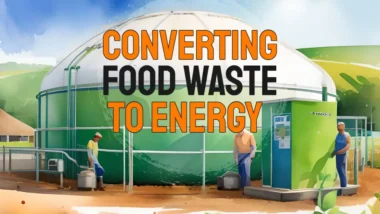Did you know that approximately 1.3 billion tons of food is wasted each year, costing around $940 billion globally? This staggering waste not only impacts hunger but is also a major contributor to climate change. Read on to discover valuable insights into the urgency of addressing food waste.
What You Will Learn
- Food waste accounts for nearly a third of all food produced for human consumption, highlighting a significant global crisis.
- Approximately 370 million people could be fed with the food wasted in the United States each year.
- Food waste contributes to 8-10% of global greenhouse gas emissions, exacerbating climate change issues.
- Inefficiencies in the supply chain and consumer behaviors significantly contribute to the problem of food waste.
- The average family loses about $1,500 annually due to food waste, impacting household budgets substantially.
- Effective meal planning and proper food storage can greatly reduce food waste at the individual level.
- Supporting sustainable businesses and policies can lead to a collective reduction in food waste across communities.
- Innovative solutions like converting food waste into energy and participating in food donation programs can help alleviate both hunger and waste simultaneously.
Understanding the Urgency of Food Waste: A Global Crisis
Defining Food Waste and Its Global Impact
Statistics and the Scale of Food Waste
Food waste is a pressing issue that affects everyone on the planet. Approximately 1.3 billion tons of food is wasted each year, which is nearly a third of all food produced for human consumption. This staggering amount highlights not just the waste itself, but also the resources that go into producing food that never gets eaten!
To put this into perspective, if we were to look at food waste on a global scale, it would be the third-largest emitter of greenhouse gases after the United States and China. This means that food waste not only impacts hunger but also contributes significantly to climate change. Here are some key statistics:
- Food waste costs around $940 billion annually.
- In developing countries, approximately 40% of food losses occur at the post-harvest and processing stages.
- Every year, about 370 million people could be fed with the food that is wasted in the United States alone.
The Environmental Consequences of Food Waste
When food is wasted, it doesn’t just vanish. In fact, it ends up in landfills where it decomposes and produces methane, a potent greenhouse gas. This not only worsens global warming but also contributes to other environmental issues. Food waste also represents a significant waste of resources such as water, land, and energy.
Consider the following environmental impacts:
- Wasted food contributes to 8-10% of global greenhouse gas emissions.
- Producing wasted food uses about 250 cubic kilometers of water each year.
- Food waste takes up valuable land that could be used for other purposes.
Food waste is a significant global issue that has far-reaching implications for the environment, economy, and society as a whole.
According to the Food and Agriculture Organization of the United Nations, approximately one-third of all food produced for human consumption is lost or wasted each year. This amounts to about 1.3 billion tons of food being thrown away, which has serious consequences for both the planet and people.
The environmental impact of food waste is substantial, with discarded food contributing to greenhouse gas emissions as it decomposes in landfills.
Additionally, the resources used to produce that wasted food – including water, energy, and land – are essentially squandered when it ends up uneaten. Addressing food waste is therefore crucial for reducing our carbon footprint and conserving natural resources.
Exploring the Root Causes of Food Waste

Understanding the root causes of food waste is essential in order to effectively address this problem. One major factor contributing to food waste is inefficiencies in the supply chain, including issues such as overproduction, improper storage and transportation, and cosmetic standards that result in perfectly edible food being discarded. Consumers also play a significant role in food waste, with households accounting for a large portion of wasted food due to factors like overbuying, improper meal planning, and confusion over expiration dates.
Supply Chain Inefficiencies: A Major Contributor
One of the biggest reasons for food waste is inefficiencies in the supply chain. This can occur at various stages, from farmers to retailers and even to our homes. For instance, improper handling and storage often lead to spoilage before food even reaches consumers.
Key factors in supply chain inefficiencies include:
- Transportation delays.
- Lack of proper storage facilities.
- Inconsistent quality standards for fruits and vegetables.
Consumer Behavior: Understanding the Domestic Perspective
Consumer habits play a significant role in food waste. From buying more than we need to misunderstand expiration dates, our daily choices can lead to waste. It’s essential to understand why these behaviors occur to effectively tackle the issue.
Some common consumer behaviors that lead to food waste are:
- Over-purchasing due to sales promotions.
- Confusion regarding expiration dates.
- Improper planning for meals.
Examining the Economic Ramifications of Food Waste
From an economic perspective, food waste represents a significant loss of money at every stage of the supply chain. Farmers lose income when their crops go unsold or are rejected due to cosmetic imperfections. Food retailers incur costs associated with disposing of expired products or unsold inventory. And consumers who throw away uneaten food are essentially throwing away their hard-earned dollars as well.
Financial Losses throughout the Supply Chain
The economic impact of food waste stretches across the entire food supply chain. From farmers to retailers, everyone faces financial losses due to wasted food. These losses can diminish profits and create a ripple effect throughout the economy.
Some examples of these financial losses include:
- Farmers losing income from unsold products.
- Retailers facing markdowns and disposal costs.
- Increased taxes and fees for waste management services.
Consumer Spending: The Hidden Costs of Wasted Food
When we waste food, we waste money too! On average, a family can lose around $1,500 annually just from throwing away food. This hidden cost often goes unnoticed but can significantly impact household budgets.
Some hidden costs associated with food waste are:
- Buying more groceries than necessary.
- Higher waste disposal fees.
- Loss of nutritional value from wasted food.
- The rising cost of processing waste food in the Waste Management Industry that must endeavour to recycle it using the latest depackaging machine technology to separate the organic content from the other materials (often called “rejects”).
Effective Strategies to Combat Food Waste at Every Level
Empowering Individuals: Practical Tips for Reducing Food Waste
There are many strategies that individuals and organizations can implement to reduce food waste on both a personal and systemic level. These include better meal planning and shopping habits at home, supporting businesses that prioritize sustainability in their operations, advocating for policy changes that incentivize reducing waste throughout the supply chain, and supporting initiatives that rescue surplus food for donation:
Mastering Meal Planning and Shopping Techniques
Meal planning can really help cut down on food waste. By organizing meals for the week, we can avoid buying unnecessary items and ensure we use what we have. Here are some ways to effectively plan:
- Make a weekly menu based on what’s in your pantry.
- Create a shopping list to stick to your plan.
- Check expiration dates to prioritize older items.
Best Food Storage Practices to Maximize Freshness
Knowing how to store food properly helps keep it fresh longer. This simple knowledge can lead to less waste. Here are some tips for effective food storage:
- Keep your fridge at the right temperature (between 34°F and 40°F).
- Use airtight containers to prevent moisture and spoilage.
- Label leftovers with dates to track freshness.
Organizational and Systemic Approaches to Minimize Waste
Supporting Sustainable Businesses and Practices
Choosing to support businesses that prioritize sustainability is crucial. This not only impacts waste but also promotes a culture of responsible consumption. Here are some ways to support these businesses:
- Shop at local farmers’ markets for fresh, seasonal produce.
- Choose brands that use sustainable packaging.
- Encourage restaurants that practice food waste reduction strategies.
If necessary you can give them a copy of this food waste guide.
Advocating for Policy Changes and Community Initiatives
Getting involved in local policies can create significant changes. By advocating for better practices, communities can work together to reduce waste. in the Food Waste Guide Here are some actions to consider:
- Support policies that promote food donation programs.
- Participate in community clean-up and awareness campaigns.
- Engage local leaders to implement food waste reduction initiatives.
Innovative Solutions: Transforming Food Waste into Valuable Resources
Converting Food Waste to Energy: Future Frontiers
Turning food waste into energy is an exciting possibility. Technologies are emerging that can help us harness this waste for useful purposes. Some methods being explored include:
- Anaerobic digestion to convert waste into biogas.
- Composting to create nutrient-rich soil for gardens.
- Using food scraps in biofuel production.
Food Donation Programs: Alleviating Hunger and Waste
Food donation programs are vital in addressing both hunger and waste issues. These initiatives can make a real difference in communities. Here are a few ways to get involved:
- Participate in local food drives to collect non-perishables.
- Volunteer at food banks to distribute surplus food.
- Encourage businesses to donate unsold food to local charities.
Call to Action: Join the Movement Against Food Waste
Mobilizing Communities for Sustainable Change
Everyone can play a part in reducing food waste. Mobilizing our communities can lead to impactful changes. Here are some ways to encourage participation:
- Organize workshops on food waste reduction.
- Create community groups focused on sustainability.
- Share resources and success stories to inspire others.
On a social level, addressing food waste can help alleviate hunger and improve access to nutritious meals for vulnerable populations. By redirecting surplus food to those in need through donations or other means, we can ensure that edible food does not go to waste while simultaneously helping those who are struggling with food insecurity.
Final Thoughts on this Food Waste Guide – Building a Sustainable Future
Reducing food waste is a shared responsibility that requires collective effort. By implementing practical strategies, we can make a significant difference. Working together, we can create a more sustainable future for everyone!
In conclusion, understanding the complexities of food waste is essential for developing effective solutions to this pressing issue. By working together to address inefficiencies in our current systems and changing our attitudes towards consumption and disposal of food, we can make meaningful progress towards reducing waste, conserving resources, and building a more sustainable future for all.



